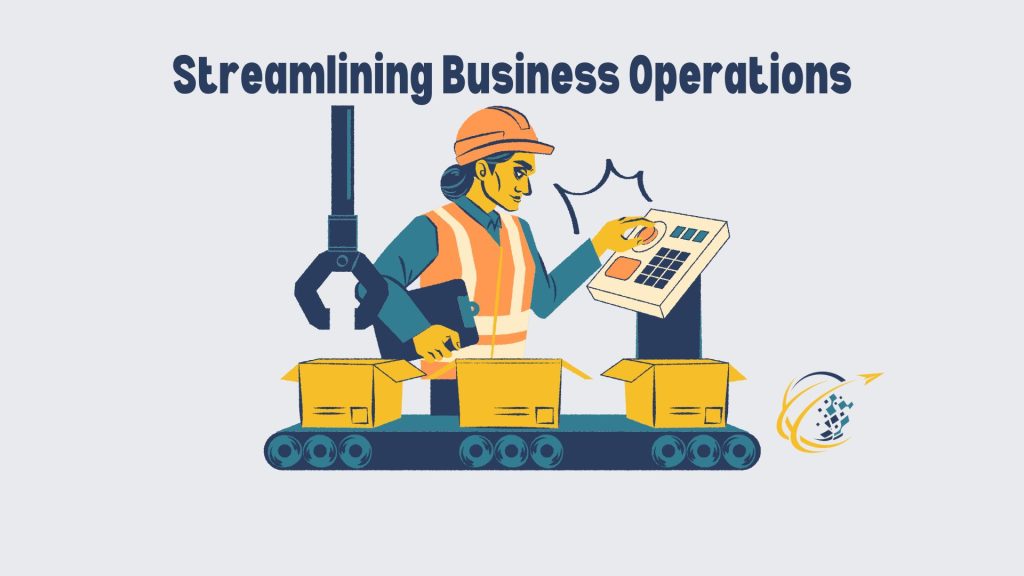Streamlining business operations is essential for companies seeking to improve efficiency, reduce costs, and remain competitive in today’s fast-paced environment. As businesses grow, they often face operational bottlenecks that hinder productivity and profitability. By adopting strategies focused on streamlining business operations, companies can optimize workflows, improve employee productivity, and increase customer satisfaction. To remain agile in a constantly evolving market, businesses must continuously evaluate and refine their processes to ensure seamless operations across all departments.
Identifying Inefficiencies
One of the first steps in streamlining business operations is identifying inefficiencies within the organization. Many companies face unnecessary complexities that slow down processes, from outdated technology systems to redundant tasks. A thorough audit of current workflows uncovers areas where businesses can make improvements. Often, businesses rely on legacy systems that no longer meet their needs, causing delays and errors. By transitioning to more modern and automated systems, businesses can reduce these delays and improve accuracy.
Additionally, streamlining operations means eliminating redundancies that result from unclear communication or overlapping responsibilities. Departments working in silos can create confusion, leading to wasted time and effort. Encouraging cross-departmental collaboration, supported by clear communication channels, ensures everyone is on the same page. This collaboration reduces the risk of errors and ensures smoother operations.
Leveraging Technology for Efficiency
The use of technology is one of the most impactful ways of streamlining business operations. Automation tools, data analytics, and cloud-based solutions offer companies the ability to reduce manual labor, increase accuracy, and manage tasks more effectively. For example, customer relationship management (CRM) systems allow businesses to track client interactions, manage sales pipelines, and improve customer service. CRM platforms automate repetitive tasks, enabling teams to focus on high-value activities like building customer relationships.
Moreover, enterprise resource planning (ERP) systems are invaluable in integrating core business processes. These platforms offer a centralized system for managing finance, HR, procurement, and other critical operations, which reduces the need for disparate systems and manual data entry. By implementing ERP solutions, businesses can automate processes that previously took significant time and effort, resulting in cost savings and increased productivity.
Transitioning to cloud-based solutions is another critical step in modernizing business operations. Cloud platforms provide remote access to data, fostering collaboration between teams regardless of location. This is particularly beneficial for businesses that operate across multiple sites or have employees working remotely. Cloud computing also enhances scalability, allowing businesses to expand without needing significant infrastructure investments.
Improving Employee Productivity
Employee productivity is closely linked to how efficiently business operations are managed. Companies that invest in streamlining their operations often see improvements in employee morale and output. Clear workflows reduce the confusion caused by vague procedures or ambiguous responsibilities, giving employees a better understanding of their roles.
Furthermore, when businesses remove manual, time-consuming tasks through automation, employees are freed up to focus on more strategic and creative work. Implementing technology such as project management software helps teams track progress, prioritize tasks, and communicate effectively. These tools provide visibility into each project, helping managers identify and address bottlenecks before they disrupt operations. As employees become more productive, businesses experience higher output and are better positioned to meet customer demands.
Reducing Operational Costs
One of the main goals of streamlining business operations is reducing operational costs. Inefficient processes not only slow down productivity but also increase overhead expenses. By eliminating unnecessary steps and automating routine tasks, companies can reduce labor costs and resource usage. For instance, automating inventory management can help prevent overstocking and understocking, both of which have financial implications.
In addition, streamlining supplier management through automated procurement systems can reduce errors and ensure that companies get the best possible deals on materials and services. Automating financial processes such as invoicing and payroll also minimizes the risk of errors and decreases the time spent on these administrative tasks.
Outsourcing non-core functions is another way businesses can reduce costs. Tasks like IT support, marketing, and payroll processing can often be handled more efficiently by third-party providers, allowing businesses to focus on their core competencies. Outsourcing can also offer access to specialized expertise without the costs associated with full-time staff.
Enhancing Customer Satisfaction
A business that successfully streamlines its operations is more capable of meeting customer expectations. By improving efficiency, businesses can provide faster service, better product quality, and more reliable delivery times. For example, an automated order management system ensures that customer orders are processed quickly and accurately. This leads to higher customer satisfaction and repeat business.
Streamlining customer service processes is equally important. Automating customer support functions, such as chatbots for handling common inquiries or ticketing systems for issue tracking, allows businesses to provide faster resolutions to customer problems. These systems also help companies track customer interactions more effectively, providing insights that can be used to improve service offerings.
Additionally, streamlined operations reduce the risk of errors that negatively impact the customer experience. Businesses that are well-organized and efficient can quickly address issues and meet customer needs, fostering trust and long-term loyalty.
Continuous Improvement
To remain competitive, businesses must view streamlining business operations as an ongoing process. Markets, technologies, and customer expectations evolve, meaning that operations that are efficient today may become outdated tomorrow. Continuous monitoring and improvement of processes are critical to maintaining streamlined operations.
Businesses should regularly review their performance metrics, such as turnaround times, error rates, and customer satisfaction scores, to identify areas for further improvement. Gathering feedback from employees and customers can provide valuable insights into operational inefficiencies. By staying proactive and adaptable, businesses can ensure that they are always operating at peak efficiency.
Streamlining business operations is a crucial strategy for businesses seeking to improve efficiency, reduce costs, and enhance customer satisfaction. By identifying inefficiencies, leveraging technology, improving employee productivity, and reducing operational costs, businesses can optimize their workflows and remain competitive. However, streamlining is not a one-time effort. It requires ongoing evaluation and adaptation to ensure that businesses can thrive in an ever-changing marketplace.


